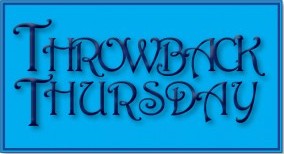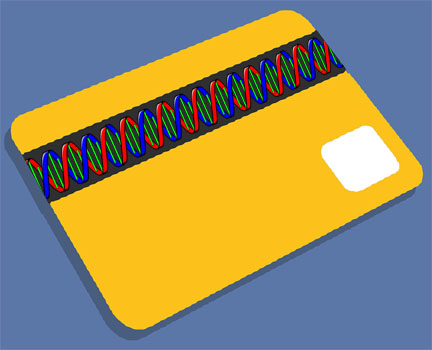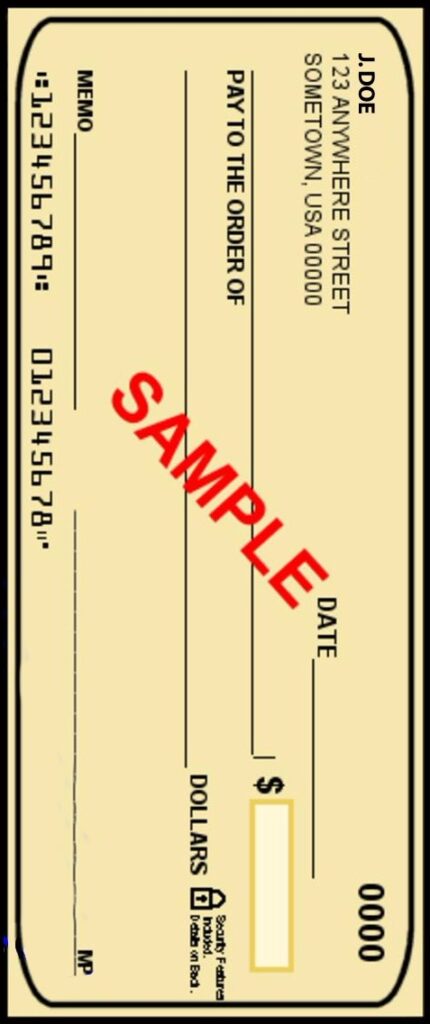
Nov 20
9
Congressional subcommittee takes on tech giants

Antitrust and other anti-anti-competition laws (the two antis are intentional) make for a curious game. They allegedly protect consumers, yet consumers are hardly ever principal players in the game. Actions are more often brought by underdog competitors and would-be dragon-slayers in government.
There is no better case in point than the fact that, as reported by PYMNTS.com, a House Judiciary subcommittee on antitrust matters just …
… issued a 449-page report … after a 16-month inquiry that recommended big changes to antitrust laws and enforcement regarding Big Tech. Proposed changes included potentially splitting up the companies in question [Amazon, Apple, Facebook, Google] or making it more difficult for them to acquire smaller companies. The study also suggested capping future Big Tech acquisitions and truncating horizontal growth.
Let’s back up for a moment.
I need hardly point out the need for laws that protect marketplace competition. When honest competition reigns, consumers win, and a more just, equitable economy grows.
In the late 19th century United States, honest competition didn’t reign. A few mega companies controlled “whole sections of the economy, like railroads, oil, steel, and sugar,” according to a U.S. Federal Trade Commission website, making competition all but impossible and abuse of consumers all but inevitable. Accordingly, Congress passed the Sherman Antitrust Act, which forbids competitors from working in concert to limit competition; the Clayton Antitrust Act, which forbids competitors from price-fixing and outlaws a monopoly “if that company is cheating or not competing fairly”; and the Federal Trade Commission (FTC) Act, which established the FTC and gave it “authority to investigate and stop unfair methods of competition and deceptive practices.”
Sounds simple enough. If only it were as simple as it sounds.
Sometimes a single service provider makes sense in order to launch a nascent, needful service. The original Bell System, aka AT&T and Ma Bell, comes to mind. In 1885, to expect a national telephone network to emerge from disparate, competing companies was to indulge wishful thinking. A little over a hundred years later, however, with the infrastructure complete, breaking up AT&T into so-called “Baby Bells” made sense. (At least, it made sense to some. Some argue that the breakup delayed providing nationwide Internet services.)
Yet not even the AT&T breakup was all that simple. AT&T was a “legal monopoly” as long as it stuck to phone service only. Breaking it into pieces ended that restriction, allowing the parent company to delve into other high-tech areas, such as the then fast-growing computer market. Moreover, with the rise of cable and satellite companies and, later still, streaming, the old, unbroken AT&T looked less scary. So much so, that most of the Baby Bells merged or bought out one another and, by 2018, had re-become part of AT&T.
In any case, consumers were arguably well-served by the original monopoly. What led to the breakup was not so much consumer noise as would-be competitor noise.
The “crime” of improving the product and benefiting users
In 1988, the U.S. Department of Justice joined 20 U.S. states in suing Microsoft for alleged unfair competitive practices. At question was the practice of Microsoft’s bundling its software with its operating system. In a lengthy ruling, Microsoft was ordered to break up à la AT&T. Microsoft, however, appealed. Investopedia reports:
The appeals court overturned [Presiding Judge Thomas Penfield] Jackson’s decision against Microsoft. Instead of seeking to break up the company, the Department of Justice decided to settle with Microsoft. In its settlement, the DoJ abandoned the requirement to break up the company, In return, Microsoft agreed to share computing interfaces with other companies.
There is too much to the Microsoft case to go into here, however, I find this observation in Section VII, paragraph 408 of Judge Jackson’s opinion interesting:
The debut of Internet Explorer and its rapid improvement gave Netscape an incentive to improve Navigator’s quality at a competitive rate. The inclusion of Internet Explorer with Windows at no separate charge increased general familiarity with the Internet and reduced the cost to the public of gaining access to it, at least in part because it compelled Netscape to stop charging for Navigator. These actions thus contributed to improving the quality of Web browsing software, lowering its cost, and increasing its availability, thereby benefitting [sic] consumers.
Note that last sentence. Jackson’s ruling, it appeared, was about protecting competitors despite benefits to consumers. Theoretically, the former might have led to the latter in the long run. Still, it is a curious thing when a company stands accused of the “crime” of improving a product, lowering cost, and benefiting consumers.
Court of public opinion
The congressional subcommittee’s 477-page report regarding Amazon, Apple, Facebook, and Google does not so much demonstrate that monopolistic abuse has occurred, but that it exists in theory, or that its potential exists. Yet, back to the PYMNTS.com piece,
In a blog post entitled “Fringe Notions on Antitrust Would Destroy Small Businesses and Hurt Consumers,” Amazon said it’s done nothing to deserve such criticisms.
“All large organizations attract the attention of regulators, and we welcome that scrutiny,” the company wrote. “But large companies are not dominant by definition, and the presumption that success can only be the result of anti-competitive behavior is simply wrong. And yet, despite overwhelming evidence to the contrary, those fallacies are at the core of regulatory spit-balling on antitrust.”
Congressional subcommittee investigations aside, the American court of public opinion can be fickle. People cheer companies as they grow from inauspicious roots by hard work and by doing things better and/or cheaper. But grow too big—whatever “too big” means—and the public may turn on you. Don’t just ask Amazon, Apple, Facebook, and Google. Ask AT&T and Microsoft. For that matter, ask Walmart, Starbucks, and so-called “too big to fail” financial institutions. Business success in the United States can be a two-edged sword.

You’d think that by now the advice below goes without saying. But if your inbox is anything like mine, you can confirm that a lot of marketers still don’t understand permission. Originally posted in two parts on November 22 and 25, 2010.
Part 1
With apologies to positive thinking devotees, today’s blog is the first in a series in which I plan to focus on what not to do when it comes to interactive marketing.
Sure, do’s are important. But unlike the other mass media, online is unforgiving when it comes to don’ts. TVs, radios, newspapers and mailboxes don’t cut you off if you happen to commit a gaffe. Email servers do.
So let’s begin with what is possibly the biggest don’t: DON’T send email blasts to people without first obtaining their permission.
Otherwise, bad things will happen. Here they are, from bad to worst:
Bad: Recipients will ignore you.
Worse: Recipients will consign emails from you to a junk folder. Thereafter, they will not even see what you send, no matter how worthy or relevant it may be, and no matter how clever you make the subject line.
Worst: Recipients will complain through appropriate online channels, and email servers will block you. For that matter, servers may detect and block you on their own. The industry term for “blocking” is blacklisting. Being blacklisted is not good. It is easier for a camel to pass through the eye of a needle than for a marketer to get off of a blacklist.
Stay tuned for more a more positive post on how to obtain (and maintain) permission to send marketing emails.
Part 2
As a follow-up to my post earlier this week on the importance of getting permission from people before sending email blasts (and this extends to clients, prospects, etc.) here’s how to obtain (and maintain) permission to send marketing emails:
- Invite people to sign up. Create a web page where people can opt in to receive emails from you. To direct them to the page, you can use online banners, direct mail and advertising in traditional media. You can also send a one-time email to people with whom you have a prior relationship.
- When people opt in, immediately send an email asking them to confirm the opt-in. But, also be sure to offer them an opportunity to opt out. This double opt-in may feel a little repugnant to die-hard marketers, because it seems like the antithesis of selling—which it is. In face-to-face selling, the moment the prospect says, “I’ll buy,” the last thing you should do is say, “Wait. Not so fast. Take a moment to reflect. Are you absolutely certain you want to buy?” But when someone opts on to an email list, that’s exactly what you should do. It gives you two benefits. First, if a server happens to blacklist you, you can show that you bend over backwards to be responsible, which goes a long way toward lifting the ban. Second, it reminds people that they signed up to hear from you, and increases the odds that they’ll recognize and pay attention to what you send.
- Every email blast should have an easy-to-find link for people to click should they wish to receive some communications from you but not others, or even opt out of hearing from you altogether. Again, this smacks of unselling. But, it helps keep you off of the dreaded blacklist. It’s also good for customer relations. It shows you’re up-front and easy to work with.
- If—perish the thought—someone opts off your list, honor that request right away. Send an acknowledgement. If your system needs a few days to complete the name removal process and there is danger of receiving more from you in the meantime, say so in the confirmation.
- Send good, relevant stuff. This has more to do with common-sense marketing than with staying off a blacklist. Your subscribers will quickly discern whether they can expect value from your emails, or time-wasting fluff. If you want them to pay attention when they hear from you, send only what is likely to be worth their while.
When it comes to interactive marketing, knowing what to do matters. But so does knowing what not to do. A wise marketer keeps up on both.
Oct 20
29
TBT: DNA and the woman behind the mag stripe


MOST PEOPLE COULDN’T tell you what DNA stands for (hint: deoxyribonucleic acid), much less pronounce it (dē-ˈäk … on second thought, never mind). But since its discovery in 1953, DNA has become a household initialism.
It’s no wonder, then, that the 1962 Nobel Prize in Physiology or Medicine went to Francis Harry Compton Crick, James Dewey Watson, and Maurice Hugh Frederick Wilkins “for their discoveries concerning the molecular structure of nucleic acids and its significance for information transfer in living material.”
Just one problem. Why the hell was Rosalind Franklin omitted? After all, on its page dedicated to Franklin, UC San Diego’s San Diego Supercomputer Center recounts:
Franklin persisted on the DNA project. J.D. Bernal called her X-ray photographs of DNA, “the most beautiful X-ray photographs of any substance ever taken.” Between 1951 and 1953 Rosalind Franklin came very close to solving the DNA structure.
In fact,
… Wilkins showed Watson one of Franklin’s crystallographic portraits of DNA. When he saw the picture, the solution became apparent to him, and the results went into an article in Nature almost immediately.
In the end, Rosalind Franklin …
… was beaten to publication by Crick and Watson in part because of the friction between Wilkins and herself.
Franklin’s tale has (at least) one corollary in banking.
It’s fairly well known among bank history buffs that IBM introduced the magnetic stripe for credit card use. It became the U.S. standard in 1969 and the international standard in 1971. As for the mag stripe’s origin, Wikipedia tells us:
Forrest Corry Parry (July 4, 1921-December 31, 2005) was the IBM engineer who invented the Magnetic stripe card used for Credit cards and identification badges.
And IBM tells us:
The first person to affix magnetic media to a plastic card for data storage was IBM engineer Forrest Parry. This was back in the early 1960s.
Trouble is, you have to read further to learn that Parry had some behind-the-scenes help. A few lines down, Wikipedia adds that Parry …
… had the idea of gluing short pieces of magnetic tape to each plastic card, but the glue warped the tape, making it unusable. When he returned home, Parry’s wife Dorothea … suggested that he use [an] iron to melt the stripe onto the card. He tried it and it worked.
Also a few lines down, IBM adds:
The story goes that he wanted to combine a strip of magnetized tape with a plastic identity card for officials of the CIA, and he couldn’t figure out how to do it. When he mentioned his problem to his wife, who happened to be ironing clothing at the time, she suggested that he use the iron to essentially melt the strip on. And that’s what he did.
Is it just me, or is “The story goes” diminutive? Either way, a fairer recounting might be, Credit for finding a way to place the magnetic stripe on plastic cards goes to husband and wife Forrest and Dorthea Parry.
On the positive side, at least Rosalind Franklin’s and Dorthea Parry’s stories can be found. A search for other banking innovations in which women might have had a hand turned up nothing, leaving me to wonder if Dorthea Parry’s tale was unique, or if history, per its habit, has simply overlooked banking’s female innovators. From a statistical standpoint, and from a look at other fields where female contributors have gone largely unsung, the latter seems more than likely.
The financial services industry today is awakening to the fact that women represent a huge chunk of the banking market, that banks overlook women at their peril (see Well’s Fargo’s “Women as customers”), and that women, once viewed chiefly as teller material, make powerful loan officers, managers, officers (see American Banker’s “Want to innovate? Hire more women”), and, finally, CEOs (see Bloomberg’s “A Female CEO of a Big Bank? The Odds Are Now Greater Than Zero”).
For a time banks’ laudatory treatment of women may have been or seemed, and to an extent may still be or seem, patronizing and self-promoting. If that is so, it is fast changing. The reality of women as a force speaks for itself.
I hope when my daughters are old enough to google “women in banking” and “banking innovations by women,” their search will be rewarded with a wealth of substantive, inspiring information.

I realize that “it seems like it was just yesterday” is a tired cliché, however, it seems like it was just yesterday that I joined Fiserv as Managing Director, Marketing Strategy and Innovation, Digital Payments. In fact, it was seven years ago this month.
Today I’m grateful (and just a little bit amazed) to announce that I have been promoted to President, Digital Payments and Data Aggregation at Fiserv.
I’m looking forward to my new role.
Predicting the demise of checks isn’t new. But when banks abandon them, it’s a whole new ball game.

The advent of debit cards predates my own advent, but I am familiar with the way bankers explained them to my parents’ generation: It’s the same as writing a check, just faster and easier.
But could it be that debit cards and checks have switched places in terms of ubiquity? I found it not just amusing but telling that, in her recent InvestorJunkie post, Kara Perez used debit cards to explain checks. “Personal checks act in the same way a debit card does,” she wrote, “only on a much slower time frame.”
The very need to define checks to a rising generation indicates a sharp decline in their use. Indeed, evidence of a checkless future is popping up everywhere. By the end of this year, UnitedHealthcare will have phased out sending payments by paper check. The Social Security Administration did away with sending checks in 2013, replacing them with electronic payments and prepaid debit cards. The incidence of stores that refuse checks is rising to the point that First Quarter Finance deemed it needful to publish a list of retail establishments that still accept them.
None of that is good news for checks. But it’s a whole new ball game when banks start giving up on checks. Which is exactly what’s taking place in South Africa right now. According to Finextra,
The humble paper cheque may be on the verge of extinction in South Africa, as banks begin moves to phase out the age-old method of exchange in favour of cards and digital payment mechanisms. Major banks Nedbank, FNB and Absa have already announced plans to discontinue the use of outdated cheque payments beginning in January of next year.
Checkless versus cashless
While the meteoric rise of digital payments led many to predict the demise of cash and checks alike, it’s easier for a society to go checkless than cashless. It turns out that going cashless is not without complications.
In 2018, CNBC reported that Amazon planned to open 3000 cashierless, cashless, cardless Amazon Go stores by 2021. But here we are, with 2021 about 10 weeks away, and there are exactly 27 Amazon Go stores. Either Amazon is planning a building spree the likes of which has never been seen, or things have changed since 2018. Moreover, Amazon Go stores began accepting cash in 2019.
The change wasn’t driven by the market but by the regulatory environment. An increasing number of local governments find that cashless stores discriminate against the unbanked, a number the U.S. Federal Reserve estimates puts at about 55 million Americans. Hunton Retail Law Resource reported in June:
… at least 21 cities and states have adopted or are considering cashless retail bans. Massachusetts, Rhode Island, and New Jersey have already enacted bans, and at least 10 states may be poised to follow. Berkeley, Philadelphia, and San Francisco also prohibit retailers from refusing cash; New York City’s ban takes effect on November 21, 2020. At least four other major cities are considering bans of their own.
Seeing a bit of writing on the cashless wall, wise retailers are choosing not to rush cashlessness. For now.
But checks are another matter.
While not accepting cash is increasingly off-limits, not accepting checks is still fair game. That’s because, unlike the unbanked, whose only means of payment is cash, checking account holders have other options such as plastics, online bill pay, smartphone payment apps like Zelle, and—if it must come to that—even cash. So while cash does not appear to be headed out anytime soon, checks’ days may be numbered.
A trend away from checks should take no one by surprise. Check printing companies are certainly preparing for it. Although they still argue the continued viability of their flagship product, many like Harland-Clarke and Deluxe have diversified into other, non-obsolescent offerings.
Meanwhile, I can’t remember the last time I wrote a check. How about you?